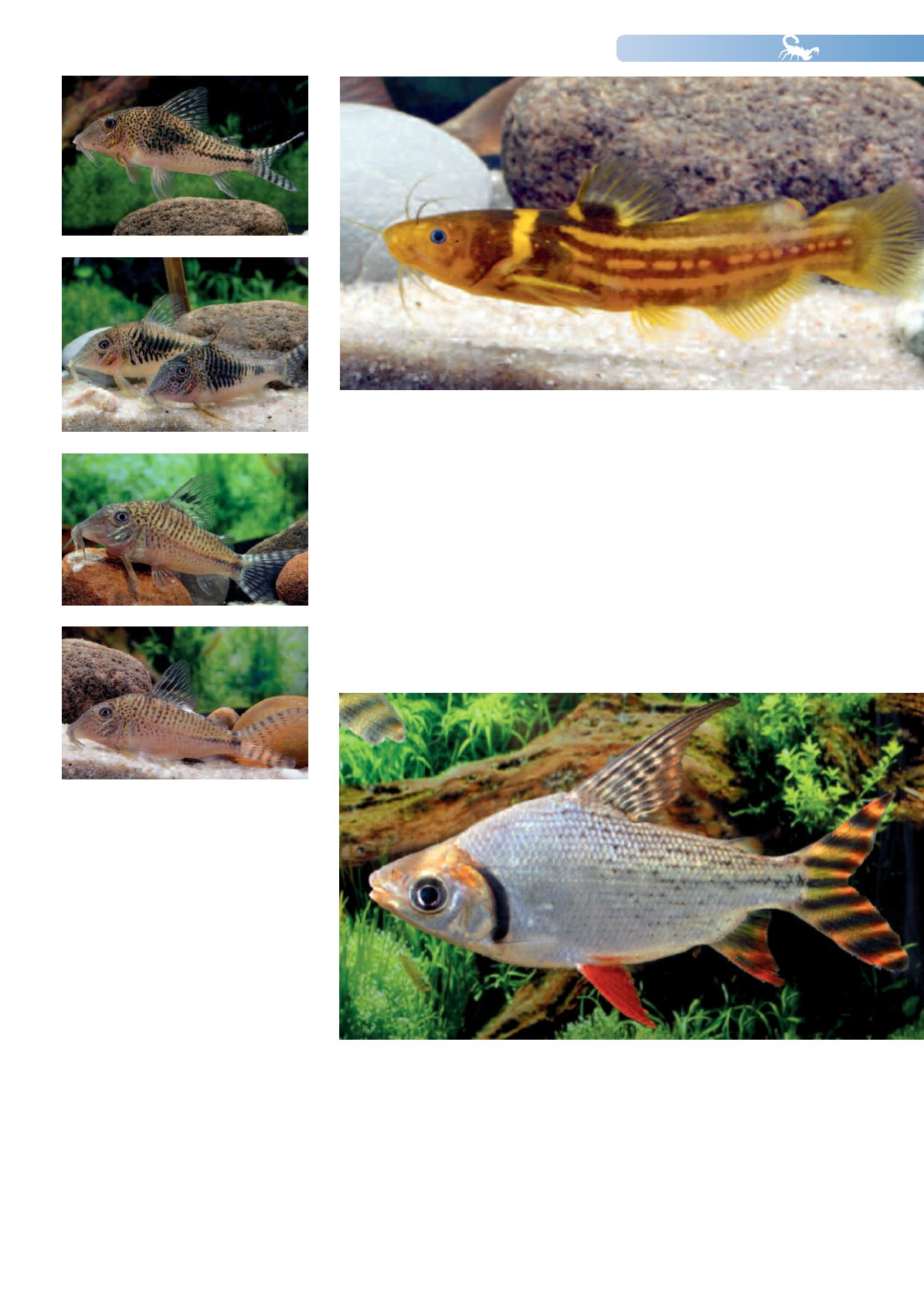
NEWS 110
23
Semaprochilodus laticeps
This gorgeous
Semaprochilodus
has recently arrived from Venezuela. Unfortunately the
identification of
Semaprochilodus
species has been full of errors in the past. On the basis of
current knowledge the imported fishes are undoubtedly
S. laticeps
. However, in the aquarium
literature and on the Internet the species is usually identified as
S. taeniurus
(which is another
species,fromBrazil) or
S.theraponura
(this species is now regarded as a synonymof
S.insignis
and
comes from Peru).For this reason it is usually sold under the name
S.taeniurus
in the trade.
Corydoras
sp.Eder
This extremely rare, fabulous long-snout
from the Madre de Dios Region in Peru has
been imported once again,under the names
Corydoras
sp. Eder I and II. Zoologically
speaking both are the same species,which is
extremely variable in coloration and has
already received various names in the hobby,
such as C115, C116, and Corydoras sp. Manu
1, 4, 7, and 8. They can be distinguished as
follows:
Corydoras
sp.Eder I
With a large distinct shoulder spot,also C116
or Manu 4,Manu 7,Manu 8
Corydoras
sp.Eder II
Without shoulder spot, also C115 or Manu 1
The distinction is, however, rather arbitrary
and the fishes are also able to change color
to some degree.
Pseudobagrus trilineatus
From China comes this very interesting catfish, recently imported for the first time. The
species grows to around 7.5 cm long and is endemic to (= lives only in) the Dong Jiang
drainage in Guangdong Province.These fishes have proved peaceful among themselves in
the importer's aquarium but essentially maintain a certain distance from each other. So
every specimen needs to be provided with its own hiding-place in the aquarium. In line
with their provenance these fishes are best kept at room temperature. An aquarium
decorated with rocks and sand, set up to imitate a small river or large stream, will probably
best satisfy the requirements of these catfishes. They are carnivores that will take any dry,
frozen, and live foods. They shouldn't be kept with very small species or young fishes as
these might be taken for food.


